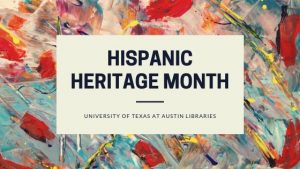
by Annah Hackett
Hispanic Heritage Month runs from September 15th through October 15th. To recognize this celebration of culture and history, we are happy to provide this list of resources.* For more information and additional resources, come visit our display on the third floor of PCL!
*Except where noted, resource descriptions are from the corresponding library catalog entry.
Fiction
Allende, Isabel. La casa de los espiritus / The House of the Spirits (1982)
Chilean writer Isabel Allende’s classic novel is both a richly symbolic family saga and the riveting story of an unnamed Latin American country’s turbulent history.

In a triumph of magic realism, Allende constructs a spirit-ridden world and fills it with colorful and all-too-human inhabitants. The Trueba family’s passions, struggles, and secrets span three generations and a century of violent social change, culminating in a crisis that brings the proud and tyrannical patriarch and his beloved granddaughter to opposite sides of the barricades. Against a backdrop of revolution and counterrevolution, Allende brings to life a family whose private bonds of love and hatred are more complex and enduring than the political allegiances that set them at odds. The House of the Spirits not only brings another nation’s history thrillingly to life, but also makes its people’s joys and anguishes wholly our own. (book jacket)
Alvarez, Julia. How the García Girls Lost Their Accents (1991)
Acclaimed writer Julia Alvarez’s beloved first novel gives voice to four sisters as they grow up in two cultures. The García sisters–Carla, Sandra, Yolanda, and Sofía–and their family must flee their home in the Dominican Republic after their father’s role in an attempt to overthrow brutal dictator Rafael Trujillo is discovered. They arrive in New York City in 1960 to a life far removed from their existence in the Caribbean. In the wondrous but not always welcoming U.S.A., their parents try to hold on to their old ways as the girls try find new lives: by straightening their hair and wearing American fashions, and by forgetting their Spanish. For them, it is at once liberating and excruciating to be caught between the old world and the new. Here they tell their stories about being at home–and not at home–in America.
Anaya, Rudolfo. Bendiceme, Ultima / Bless Me, Ultima (1972)
Antonio Marez is six years old when Ultima comes to stay with his family in New Mexico. She is a curandera, one who cures with herbs and magic. Under her wise wing, Tony will probe the family ties that bind and rend him, and he will discover himself in the magical secrets of the pagan past–a mythic legacy as palpable as the Catholicism of Latin America. And at each life turn there is Ultima, who delivered Tony into the world…and will nurture the birth of his soul.
The winner of the 2015 National Humanities Medal, Rudolfo Anaya is acclaimed as the father of Chicano literature in English and for his rich and compassionate writing about the Mexican-American experience.
Bendis, Brian-Michael, et al. Miles Morales: The Ultimate Spider-Man. Ultimate Collection, Book 2 (2015)

Miles Morales is still getting used to being Spider-Man when Captain America makes him a very special offer. Is Miles really joining the Ultimates? With awounded nation crying out for heroes, Miles Morales is determined to prove that he has what it takes! But when a terrifying new Venom symbiote surfaces, armed with the truth about the incident that gave the new Spider-Man his powers, Spidey might have just made his first true archenemy.
Castillo-Garsow, Melissa, ed. ¡Manteca! : An Anthology of Afro-Latin@ Poets (2017)
“We defy translation,” Sandra María Esteves writes. “Nameless/we are a whole culture/once removed.” She is half Dominican, half Puerto Rican, with indigenous and African blood, born in the Bronx. Like so many of the contributors, she is a blend of cultures, histories and languages. Containing the work of more than 40 poets–equally divided between men and women–who self-identify as Afro-Latino, ¡Manteca! is the first poetry anthology to highlight writings by Latinos of African descent. The themes covered are as diverse as the authors themselves. Many pieces rail against a system that institutionalizes poverty and racism. Others remember parents and grandparents who immigrated to the United States in search of a better life, only to learn that the American Dream is a nightmare for someone with dark skin and nappy hair. But in spite of the darkness, faith remains. Anthony Morales’ grandmother, like so many others, was “hardwired to hold on to hope.” There are love poems to family and lovers. And music–salsa, merengue, jazz–permeates this collection.Editor and scholar Melissa Castillo-Garsow writes in her introduction that “the experiences and poetic expression of Afro-Latinidad were so diverse” that she could not begin to categorize it. Some write in English, others in Spanish. They are Puerto Rican, Dominican and almost every combination conceivable, including Afro-Mexican. Containing the work of well-known writers such as Pedro Pietri, Miguel Piñero and E. Ethelbert Miller, less well-known ones are ready to be discovered in these pages.
Coelho, Paulo. O Alquimista / The Alchemist (1988)
“My heart is afraid that it will have to suffer,” the boy told the alchemist one night as they looked up at the moonless sky.” Tell your heart that the fear of suffering is worse than the suffering itself. And that no heart has ever suffered when it goes in search of its dreams.”
Every few decades a book is published that changes the lives of its readers forever. The Alchemist is such a book. With over a million and a half copies sold around the world, The Alchemist has already established itself as a modern classic, universally admired. Paulo Coelho’s charming fable, now available in English for the first time, will enchant and inspire an even wider audience of readers for generations to come.
The Alchemist is the magical story of Santiago, an Andalusian shepherd boy who yearns to travel in search of a worldly treasure as extravagant as any ever found. From his home in Spain he journeys to the markets of Tangiers and across the Egyptian desert to a fateful encounter with the alchemist.
The story of the treasures Santiago finds along the way teaches us, as only a few stories have done, about the essential wisdom of listening to our hearts, learning to read the omens strewn along life’s path, and, above all, following our dreams.
Diaz, Junot. The Brief Wondrous Life of Oscar Wao (2007)
Oscar is a sweet but disastrously overweight, lovesick Dominican ghetto nerd. From his home in New Jersey, where he lives with his old-world mother and rebellious sister, Oscar dreams of becoming the Dominican J. R. R. Tolkien and, most of all, of finding love. But he may never get what he wants, thanks to the Fukú— the curse that has haunted Oscar’s family for generations, dooming them to prison, torture, tragic accidents, and, above all, ill-starred love. Oscar, still waiting for his first kiss, is just its most recent victim.
Díaz immerses us in the tumultuous life of Oscar and the history of the family at large, rendering with genuine warmth and dazzling energy, humor, and insight the Dominican-American experience, and, ultimately, the endless human capacity to persevere in the face of heartbreak and loss. A true literary triumph, The Brief Wondrous Life of Oscar Wao confirms Junot Díaz as one of the best and most exciting voices of our time.
Esquivel, Laura. Como agua para chocolate / Like Water for Chocolate (1989)
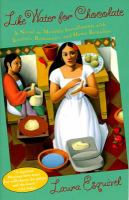
This classic love story takes place on the De la Garza ranch, as the tyrannical owner, MamaElena, chops onions at the kitchen table in her final days of pregnancy.While still in her mother’s womb, her daughter to be weeps so violently she causes an early labor, and little Tita slips out amid the spices and fixings for noodle soup. This early encounter with food soon becomes a way of life, and Tita grows up to be a master chef, using cooking to express herself and sharing recipes with readers along the way.
Marquez, Gabriel Garcia. Cien anos de soledad / One Hundred Years of Solitude (1967)
The brilliant, bestselling, landmark novel that tells the story of the Buendia family, and chronicles the irreconcilable conflict between the desire for solitude and the need for love–in rich, imaginative prose that has come to define an entire genre known as “magical realism.”
Sell, Sean S., and Nicolás Huet Bautista, eds. Chiapas Maya Awakening : Contemporary Poems and Short Stories (2017)
Mexico’s indigenous people speak a number of rich and complex languages today, as they did before the arrival of the Spanish. Yet a common misperception is that Mayas have no languages of their own, only dialectos, and therefore live in silence. In reality, contemporary Mayas are anything but voiceless. Chiapas Maya Awakening, a collection of poems and short stories by indigenous authors from Chiapas, Mexico, is an inspiring testimony to their literary achievements. A unique trilingual edition, it presents the contributors’ works in the living Chiapas Mayan languages of Tsotsil and Tseltal, along with English and Spanish translations.
As Sean S. Sell, Marceal Méndez, and Inés Hernández-Ávila explain in their thoughtful introductory pieces, the indigenous authors of this volume were born between the mid-1970s and the mid-1990s, a time of growing cultural awareness among the native communities of Chiapas. Although the authors received a formal education, their language of instruction was Spanish, and they had to pursue independent paths to learn to read and write in their native tongues. In the book’s first half, devoted to poetry, the writers consciously speak for their communities. Their verses evoke the quetzal, the moon, and the sea and reflect the identities of those who celebrate them. The short stories that follow address aspects of modern Maya life. In these stories, mistrust and desperation yield violence among a people whose connection to the land is powerful but still precarious.
Chiapas Maya Awakening demonstrates that Mayas are neither a vanished ancient civilization nor a remote, undeveloped people. Instead, through their memorable poems and stories, the indigenous writers of this volume claim a place of their own within the broader fields of national and global literature.

Non-Fiction
Acuña, Rodolfo F. Occupied America: A History of Chicanos (1981)
Authored by one of the most influential and highly-regarded voices of Chicano history and ethnic studies, Occupied America is the most definitive introduction to Chicano history. This comprehensive overview of Chicano history is passionately written and extensively researched. With a concise and engaged narrative, and timelines that give students a context for pivotal events in Chicano history, Occupied America illuminates the struggles and decisions that frame Chicano identity today.
Aldama, Frederick Luis. Latinx Superheroes in Mainstream Comics (2018)
Whether good or evil, beautiful or ugly, smart or downright silly, able-bodied or differently abled, gay or straight, male or female, young or old, Latinx superheroes in mainstream comic book stories are few and far between. It is as if finding the Latinx presence in the DC and Marvel worlds requires activation of superheroic powers.
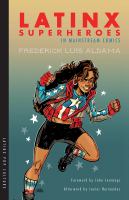 Latinx Superheroes in Mainstream Comics blasts open barriers with a swift kick. It explores deeply and systematically the storyworld spaces inhabited by brown superheroes in mainstream comic book storyworlds: print comic books, animation, TV, and film. It makes visible and lets loose the otherwise occluded and shackled. Leaving nothing to chance, it sheds light on how creators (authors, artists, animators, and directors) make storyworlds that feature Latinos/as, distinguishing between those that we can and should evaluate as well done and those we can and should evaluate as not well done.
Latinx Superheroes in Mainstream Comics blasts open barriers with a swift kick. It explores deeply and systematically the storyworld spaces inhabited by brown superheroes in mainstream comic book storyworlds: print comic books, animation, TV, and film. It makes visible and lets loose the otherwise occluded and shackled. Leaving nothing to chance, it sheds light on how creators (authors, artists, animators, and directors) make storyworlds that feature Latinos/as, distinguishing between those that we can and should evaluate as well done and those we can and should evaluate as not well done.
The foremost expert on Latinx comics, Frederick Luis Aldama guides us through the full archive of all the Latinx superheros in comics since the 1940s. Aldama takes us where the superheroes live–the barrios, the hospitals, the school rooms, the farm fields–and he not only shows us a view to the Latinx content, sometimes deeply embedded, but also provokes critical inquiry into the way storytelling formats distill and reconstruct real Latinos/as.
Thoroughly entertaining but seriously undertaken, Latinx Superheroes in Mainstream Comics allows us to truly see how superhero comic book storyworlds are willfully created in ways that make new our perception, thoughts, and feelings.
Allende, Isabel. Paula (1994)
One of the most popular and acclaimed of Latin American authors presents an unforgettable memoir. An exquisitely rendered, deeply moving mother-daughter story that doubles as Allende’s autobiography, Paula is a prodigious evocation and a hymn to life, written from the heart.
Chavez, Cesar. An Organizer’s Tale : Speeches (2008)
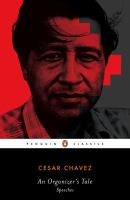 One of the most important civil rights leaders in American history, Cesar Chavez was a firm believer in the principles of nonviolence, and he effectively employed peaceful tactics to further his cause. Through his efforts, he helped achieve dignity, fair wages, benefits, and humane working conditions for hundreds of thousands of farm workers. This extensive collection of Chavez’s speeches and writings chronicles his progression and development as a leader, and includes previously unpublished material. From speeches to spread the word of the Delano Grape Strike to testimony before the House of Representatives about the hazards of pesticides, Chavez communicated in clear, direct language and motivated people everywhere with an unflagging commitment to his ideals.
One of the most important civil rights leaders in American history, Cesar Chavez was a firm believer in the principles of nonviolence, and he effectively employed peaceful tactics to further his cause. Through his efforts, he helped achieve dignity, fair wages, benefits, and humane working conditions for hundreds of thousands of farm workers. This extensive collection of Chavez’s speeches and writings chronicles his progression and development as a leader, and includes previously unpublished material. From speeches to spread the word of the Delano Grape Strike to testimony before the House of Representatives about the hazards of pesticides, Chavez communicated in clear, direct language and motivated people everywhere with an unflagging commitment to his ideals.
de la Torre, Oscar. The People of the River : Nature and Identity in Black Amazonia, 1835-1945 (2018)
In this history of the black peasants of Amazonia, Oscar de la Torre focuses on the experience of African-descended people navigating the transition from slavery to freedom. He draws on social and environmental history to connect them intimately to the natural landscape and to Indigenous peoples. Relying on this world as a repository for traditions, discourses, and strategies that they retrieved especially in moments of conflict, Afro-Brazilians fought for autonomous communities and developed a vibrant ethnic identity that supported their struggles over labor, land, and citizenship.
Prior to abolition, enslaved and escaped blacks found in the tropical forest a source for tools, weapons, and trade–but it was also a cultural storehouse within which they shaped their stories and records of confrontations with slaveowners and state authorities. After abolition, the black peasants’ knowledge of local environments continued to be key to their aspirations, allowing them to maintain relationships with powerful patrons and to participate in the protest cycle that led Getulio Vargas to the presidency of Brazil in 1930. In commonly referring to themselves by such names as “sons of the river,” black Amazonians melded their agro-ecological traditions with their emergent identity as political stakeholders.
Hall, Lynda, ed. Telling Moments : Autobiographical Lesbian Short Stories (2003)
Telling Moments collects contemporary short stories by a diverse group of twenty-four lesbian writers. Engaging themes of life and death, aging, motherhood, race, love, work, and travel, the writers offer brief glimpses into lesbian lives.
The stories are by well-known contemporary writers–Gloria Anzaldúa, Mary Cappello, Emma Donoghue, Jewelle Gomez, Karla Jay, Anna Livia, Valerie Miner, Lesléa Newman, Minnie Bruce Pratt, Ruthann Robson, Sarah Schulman, and Jess Wells–and exciting newer voices, such as Donna Allegra and Marion Douglas. There are also stories from performance artists Carmelita Tropicana, Peggy Shaw, and Maya Chowdhry. Anna Livia’s protagonist appreciates her mother’s artful garden creation. Ruthann Robson tells of a survivor of the health care system. In Marion Douglas’s story a teenager dances with an alluring classmate. Donna Allegra’s strong construction worker copes with the death of her mother. And Karla Jay sets her character forth to swim with sharks. Most of the stories are accompanied by an author photo, biographical sketch, and–a most significant feature–a commentary from the author on her writing process and the autobiographical nature of her story, illustrating the truth behind the fiction
Hernández-Ávila, Inés, and Norma Elia Cantú, eds. Entre Guadalupe y Malinche : Tejanas in Literature and Art (2016)
Mexican and Mexican American women have written about Texas and their lives in the state since colonial times. Edited by fellow Tejanas Inés Hernández-Ávila and Norma Elia Cantú, Entre Guadalupe y Malinche gathers, for the first time, a representative body of work about the lives and experiences of women who identify as Tejanas in both the literary and visual arts.
The writings of more than fifty authors and the artwork of eight artists manifest the nuanced complexity of what it means to be Tejana and how this identity offers alternative perspectives to contemporary notions of Chicana identity, community, and culture. Considering Texas-Mexican women and their identity formations, subjectivities, and location on the longest border between Mexico and any of the southwestern states acknowledges the profound influence that land and history have on a people and a community, and how Tejana creative traditions have been shaped by historical, geographical, cultural, linguistic, social, and political forces. This representation of Tejana arts and letters brings together the work of rising stars along with well-known figures such as writers Gloria Anzaldúa, Emma Pérez, Alicia Gaspar de Alba, Carmen Tafolla, and Pat Mora, and artists such as Carmen Lomas Garza, Kathy Vargas, Santa Barraza, and more. The collection attests to the rooted presence of the original indigenous peoples of the land now known as Tejas, as well as a strong Chicana/Mexicana feminism that has its precursors in Tejana history itself.
Morales, Iris, ed. Latinas : Struggles & Protests in 21st Century USA (2018)
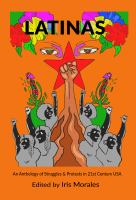 Latinas: Struggles & Protests in 21st Century USA is a timely collection of poetry and prose reflecting on women’s lived experiences and the ways that Latinas address the relationship between gender and social change. Edited by longtime activist, Iris Morales, the authors are poets and activists, educators, artists, and journalists engaged in a variety of work from community organizing to university teaching. The selections illustrate how Latinas understand and resist the gendered conditions of their lives. They expose inequities that Latinas face as women but also by class; race, ethnicity, and national origin; immigration status; social location; and the legacy of history. The volume most closely aligns with the view of feminism as a movement to end sexist oppression, both its institutional and individual manifestations.
Latinas: Struggles & Protests in 21st Century USA is a timely collection of poetry and prose reflecting on women’s lived experiences and the ways that Latinas address the relationship between gender and social change. Edited by longtime activist, Iris Morales, the authors are poets and activists, educators, artists, and journalists engaged in a variety of work from community organizing to university teaching. The selections illustrate how Latinas understand and resist the gendered conditions of their lives. They expose inequities that Latinas face as women but also by class; race, ethnicity, and national origin; immigration status; social location; and the legacy of history. The volume most closely aligns with the view of feminism as a movement to end sexist oppression, both its institutional and individual manifestations.
The anthology includes a mix of genres: poems, personal narratives, letters, scholarly essays, news articles, excerpts from plays, mission statements, lyrics, and herstories looking across time, generational, and geographic boundaries. Each piece is unique. Together they open a window that reveals a range of Latina perspectives on important contemporary socio-economic-political and cultural concerns, and imaginings for a more humane world.
“This anthology is especially urgent in a moment marked by the “silence breakers” . . . and the simultaneous silencing of women of color within these narratives. Latinas, in particular, have much to teach us as we face escalated attacks on Latinx immigrants, the U.S.-fueled crisis in Puerto Rico, and the misogyny that guides legislation against health care….” Dr. Deborah Paredez, Co-Director and Co-Founder of CantoMundo, Associate Professor of Professional Practice in the Writing Program at Columbia University, and author of This Side of Skin and Selenidad: Selena, Latinos, and the Performance of Memory.
Morrissey, Katherine G., and John-Michael H. Warner, eds. Border Spaces : Visualizing the U.S.-Mexico Frontera (2018)
The built environment along the U.S.-Mexico border has long been a hotbed of political and creative action. In this volume, the historically tense region and visually provocative margin–the southwestern United States and northern Mexico–take center stage. From the borderlands perspective, the symbolic importance and visual impact of border spaces resonate deeply.
In Border Spaces, Katherine G. Morrissey, John-Michael H. Warner, and other essayists build on the insights of border dwellers, or fronterizos, and draw on two interrelated fields–border art history and border studies. The editors engage in a conversation on the physical landscape of the border and its representations through time, art, and architecture.
The volume is divided into two linked sections–one on border histories of built environments and the second on border art histories. Each section begins with a “conversation” essay–co-authored by two leading interdisciplinary scholars in the relevant fields–that weaves together the book’s thematic questions with the ideas and essays to follow.
Border Spaces is prompted by art and grounded in an academy ready to consider the connections between art, land, and people in a binational region.
Romo, David. Ringside Seat to a Revolution : An Underground Cultural History of El Paso and Juárez, 1893-1923 (2005)
El Paso/Juárez served as the tinderbox of the Mexican Revolution and the tumultuous years to follow. In essays and archival photographs, David Romo tells the surreal stories at the roots of the greatest Latin American revolution: The sainted beauty queen Teresita inspires revolutionary fervor and is rumored to have blessed the first rifles of the revolutionaries; anarchists publish newspapers and hatch plots against the hated Porfirio Diaz regime; Mexican outlaw Pancho Villa eats ice cream cones and rides his Indian motorcycle happily through downtown; El Paso’s gringo mayor wears silk underwear because he is afraid of Mexican lice; John Reed contributes a never-before-published essay; young Mexican maids refuse to be deloused so they shut down the border and back down Pershing’s men in the process; vegetarian and spiritualist Francisco Madero institutes the Mexican revolutionary junta in El Paso before crossing into Juárez to his ill-fated presidency and assassination; and bands play Verdi while firing squads go about their deadly business. Romo’s work does what Mike Davis’City of Quartz did for Los Angeles–it presents a subversive and contrary vision of the sister cities during this crucial time for both countries.
Rondilla, Joanne L., Rudy P. Guevarra, Jr., and Paul Spickard, eds. Red and Yellow, Black and Brown : Decentering Whiteness in Mixed Race Studies (2017)
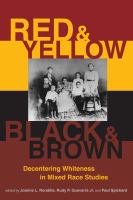 Red and Yellow, Black and Brown gathers together life stories and analysis by twelve contributors who express and seek to understand the often very different dynamics that exist for mixed race people who are not part white. The chapters focus on the social, psychological, and political situations of mixed race people who have links to two or more peoples of color– Chinese and Mexican, Asian and Black, Native American and African American, South Asian and Filipino, Black and Latino/a and so on. Red and Yellow, Black and Brown addresses questions surrounding the meanings and communication of racial identities in dual or multiple minority situations and the editors highlight the theoretical implications of this fresh approach to racial studies.
Red and Yellow, Black and Brown gathers together life stories and analysis by twelve contributors who express and seek to understand the often very different dynamics that exist for mixed race people who are not part white. The chapters focus on the social, psychological, and political situations of mixed race people who have links to two or more peoples of color– Chinese and Mexican, Asian and Black, Native American and African American, South Asian and Filipino, Black and Latino/a and so on. Red and Yellow, Black and Brown addresses questions surrounding the meanings and communication of racial identities in dual or multiple minority situations and the editors highlight the theoretical implications of this fresh approach to racial studies.
Vega, Marta Moreno, ed. Women Warriors of the Afro-Latina Diaspora (2012)
This collection features eleven essays and four poems in which Latina women of African descent share their stories. The authors included are from all over Latin America and they write about the African diaspora and issues such as colonialism, oppression and disenfranchisement. Diva Moreira, a black Brazilian, writes that she experienced racism and humiliation at a very young age. The worst experience, she remembers, was when her mother’s bosses told her she didn’t need to go to school after the fourth grade, “because blacks don’t need to study more than that.” The contributors professions range from artists to grass-roots activists, scholars and elected officials. Each is engaged in her community, and they all use their positions to advocate for justice, racial equality and cultural equity. A fascinating look at the legacy of more than 400 years of African enslavement in the Americas, this collection of personal stories is a must-read for anyone interested in the African diaspora and issues of inequality and racism.
Viloria, Hida. Born Both : An Intersex Life (2017)
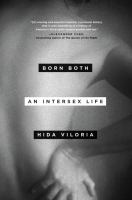
My name is Hida Viloria. I was raised as a girl but discovered at a young age that my body looked different. Having endured an often turbulent home life as a kid, there were many times when I felt scared and alone, especially given my attraction to girls. But unlike most people in the first world who are born intersex–meaning they have genitals, reproductive organs, hormones, and/or chromosomal patterns that do not fit standard definitions of male or female–I grew up in the body I was born with because my parents did not have my sex characteristics surgically altered at birth.
It wasn’t until I was twenty-six and encountered the term intersex in a San Francisco newspaper that I finally had a name for my difference. That’s when I began to explore what it means to live in the space between genders–to be both and neither. I tried living as a feminine woman, an androgynous person, and even for a brief period of time as a man. Good friends would not recognize me, and gay men would hit on me. My gender fluidity was exciting, and in many ways freeing–but it could also be isolating.
I had to know if there were other intersex people like me, but when I finally found an intersex community to connect with I was shocked, and then deeply upset, to learn that most of the people I met had been scarred, both physically and psychologically, by infant surgeries and hormone treatments meant to “correct” their bodies. Realizing that the invisibility of intersex people in society facilitated these practices, I made it my mission to bring an end to it–and became one of the first people to voluntarily come out as intersex at a national and then international level.
Born Both is the story of my lifelong journey toward finding love and embracing my authentic identity in a world that insists on categorizing people into either/or, and of my decades-long fight for human rights and equality for intersex people everywhere.

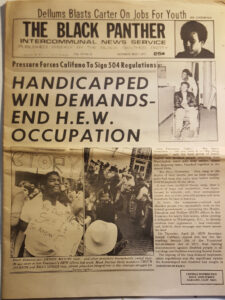
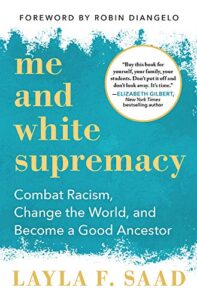 In today’s
In today’s 
 The creative and entertainment industries are strengthened by the inclusion of non-white artists because they bring new stories to the screen and stage. Attempting to perform inclusivity by slotting non-white actors into traditionally white roles without any recognition of the changes this brings to a production is a way of silencing those stories and thus a form of racism.
The creative and entertainment industries are strengthened by the inclusion of non-white artists because they bring new stories to the screen and stage. Attempting to perform inclusivity by slotting non-white actors into traditionally white roles without any recognition of the changes this brings to a production is a way of silencing those stories and thus a form of racism.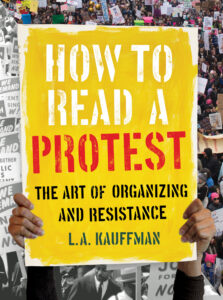
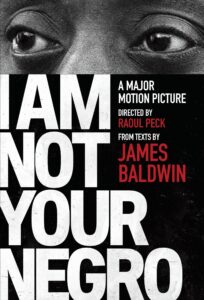

 César Chávez was a tireless activist whose devotion to the cause of farm workers contributed to the ongoing fight for workers’ rights today. As a first generation American who toiled as a migrant worker when he was young, he had specific insight into the racist and classist system that farm laborers were forced to endure in the mid-twentieth century. In order to escape this unjust system, he joined the United State Navy before eventually returning to his roots and beginning his journey as a labor organizer in order to address the poverty and inequalities he experienced and observed.
César Chávez was a tireless activist whose devotion to the cause of farm workers contributed to the ongoing fight for workers’ rights today. As a first generation American who toiled as a migrant worker when he was young, he had specific insight into the racist and classist system that farm laborers were forced to endure in the mid-twentieth century. In order to escape this unjust system, he joined the United State Navy before eventually returning to his roots and beginning his journey as a labor organizer in order to address the poverty and inequalities he experienced and observed.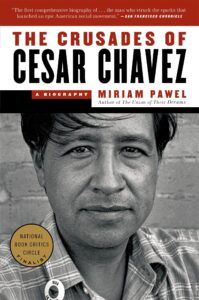 The Crusades of César Chávez
The Crusades of César Chávez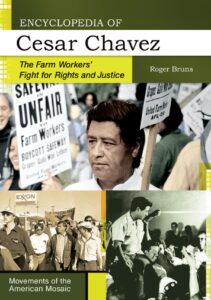 Encyclopedia of César Chávez: The Farm Workers’ Fight for Rights and Justice
Encyclopedia of César Chávez: The Farm Workers’ Fight for Rights and Justice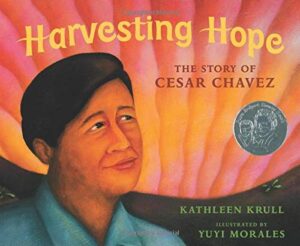
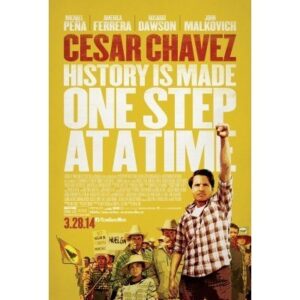 César Chávez
César Chávez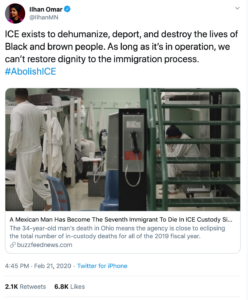
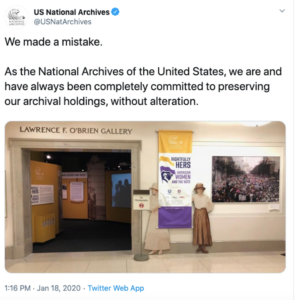
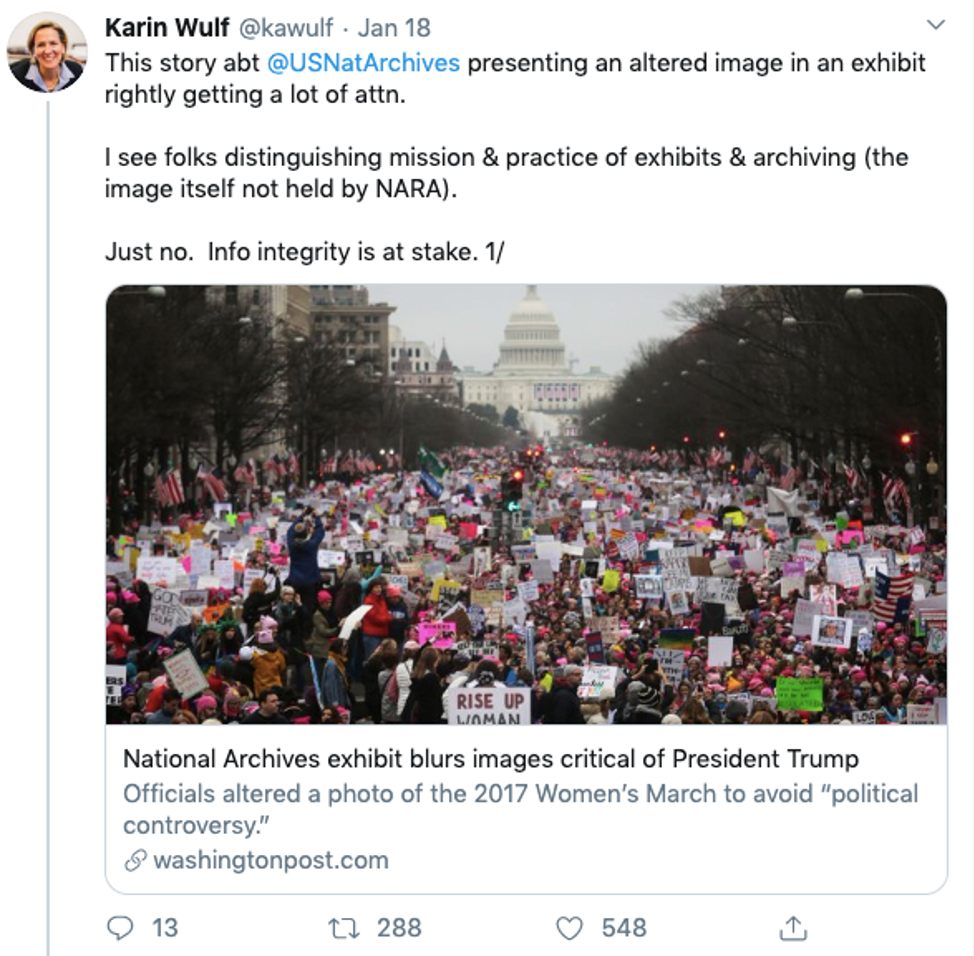




 Latinx Superheroes in Mainstream Comics blasts open barriers with a swift kick. It explores deeply and systematically the storyworld spaces inhabited by brown superheroes in mainstream comic book storyworlds: print comic books, animation, TV, and film. It makes visible and lets loose the otherwise occluded and shackled. Leaving nothing to chance, it sheds light on how creators (authors, artists, animators, and directors) make storyworlds that feature Latinos/as, distinguishing between those that we can and should evaluate as well done and those we can and should evaluate as not well done.
Latinx Superheroes in Mainstream Comics blasts open barriers with a swift kick. It explores deeply and systematically the storyworld spaces inhabited by brown superheroes in mainstream comic book storyworlds: print comic books, animation, TV, and film. It makes visible and lets loose the otherwise occluded and shackled. Leaving nothing to chance, it sheds light on how creators (authors, artists, animators, and directors) make storyworlds that feature Latinos/as, distinguishing between those that we can and should evaluate as well done and those we can and should evaluate as not well done. One of the most important civil rights leaders in American history, Cesar Chavez was a firm believer in the principles of nonviolence, and he effectively employed peaceful tactics to further his cause. Through his efforts, he helped achieve dignity, fair wages, benefits, and humane working conditions for hundreds of thousands of farm workers. This extensive collection of Chavez’s speeches and writings chronicles his progression and development as a leader, and includes previously unpublished material. From speeches to spread the word of the Delano Grape Strike to testimony before the House of Representatives about the hazards of pesticides, Chavez communicated in clear, direct language and motivated people everywhere with an unflagging commitment to his ideals.
One of the most important civil rights leaders in American history, Cesar Chavez was a firm believer in the principles of nonviolence, and he effectively employed peaceful tactics to further his cause. Through his efforts, he helped achieve dignity, fair wages, benefits, and humane working conditions for hundreds of thousands of farm workers. This extensive collection of Chavez’s speeches and writings chronicles his progression and development as a leader, and includes previously unpublished material. From speeches to spread the word of the Delano Grape Strike to testimony before the House of Representatives about the hazards of pesticides, Chavez communicated in clear, direct language and motivated people everywhere with an unflagging commitment to his ideals. Latinas: Struggles & Protests in 21st Century USA is a timely collection of poetry and prose reflecting on women’s lived experiences and the ways that Latinas address the relationship between gender and social change. Edited by longtime activist, Iris Morales, the authors are poets and activists, educators, artists, and journalists engaged in a variety of work from community organizing to university teaching. The selections illustrate how Latinas understand and resist the gendered conditions of their lives. They expose inequities that Latinas face as women but also by class; race, ethnicity, and national origin; immigration status; social location; and the legacy of history. The volume most closely aligns with the view of feminism as a movement to end sexist oppression, both its institutional and individual manifestations.
Latinas: Struggles & Protests in 21st Century USA is a timely collection of poetry and prose reflecting on women’s lived experiences and the ways that Latinas address the relationship between gender and social change. Edited by longtime activist, Iris Morales, the authors are poets and activists, educators, artists, and journalists engaged in a variety of work from community organizing to university teaching. The selections illustrate how Latinas understand and resist the gendered conditions of their lives. They expose inequities that Latinas face as women but also by class; race, ethnicity, and national origin; immigration status; social location; and the legacy of history. The volume most closely aligns with the view of feminism as a movement to end sexist oppression, both its institutional and individual manifestations. Red and Yellow, Black and Brown gathers together life stories and analysis by twelve contributors who express and seek to understand the often very different dynamics that exist for mixed race people who are not part white. The chapters focus on the social, psychological, and political situations of mixed race people who have links to two or more peoples of color– Chinese and Mexican, Asian and Black, Native American and African American, South Asian and Filipino, Black and Latino/a and so on. Red and Yellow, Black and Brown addresses questions surrounding the meanings and communication of racial identities in dual or multiple minority situations and the editors highlight the theoretical implications of this fresh approach to racial studies.
Red and Yellow, Black and Brown gathers together life stories and analysis by twelve contributors who express and seek to understand the often very different dynamics that exist for mixed race people who are not part white. The chapters focus on the social, psychological, and political situations of mixed race people who have links to two or more peoples of color– Chinese and Mexican, Asian and Black, Native American and African American, South Asian and Filipino, Black and Latino/a and so on. Red and Yellow, Black and Brown addresses questions surrounding the meanings and communication of racial identities in dual or multiple minority situations and the editors highlight the theoretical implications of this fresh approach to racial studies.
